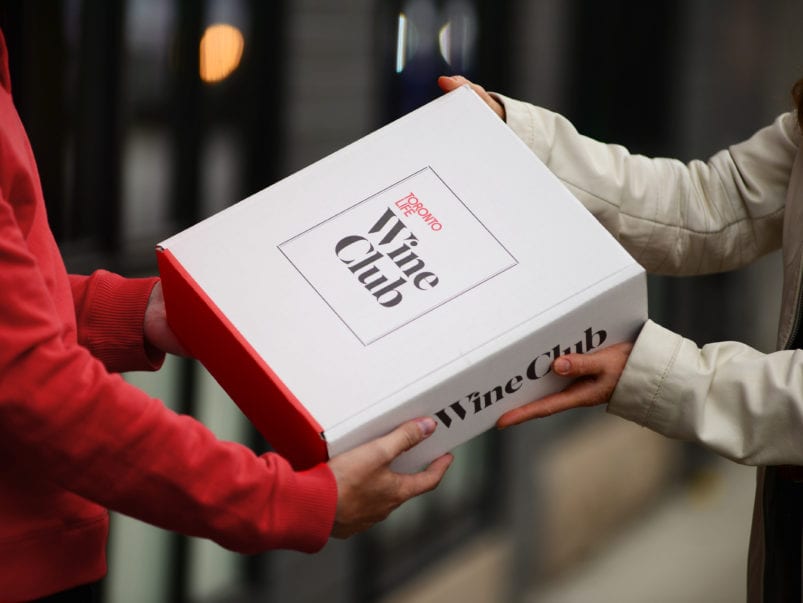Here’s what’s inside October’s Toronto Life Wine Club box
In this month’s delivery: three classic examples of the finesse that Stratus Vineyards achieves in its wines, with a deeply complex merlot, a picture-perfect sauvignon blanc and a very rare botrytis-affected semillon. Orders must be placed by Oct. 23.
Existing club member? Login here.

Stratus Merlot 2015
Why we’re into this wine: Fifteen years after Sideways was released, people still have the wrong idea about merlot. But merlot is why Bordeaux wines work. When cabernet sauvignon can’t ripen due to inclement weather, merlot saves the day in the blends. So why not just drink it straight up and enjoy the full effect? It’s supremely inviting, with red and black berry fruit, velvety texture and supple tannins. Ontario merlot is among the best there is, and Stratus is the best of the best.
What it tastes like: There’s so much complexity in this wine—ripe plum, chocolate, cassis and black olive—you might not recognize it as merlot all on its own. It’s fruit-forward, concentrated and multi-layered with full-body juiciness and balancing acidity.
How to drink it: Pair with meaty fall fare: venison, beef stew, prime rib and wild mushrooms.
2017 Stratus Sauvignon Blanc
Why we’re into this wine: There is a lot of acceptable sauvignon blanc out there, coming from all over the world. But this one is special, bridging the old world and the new. It’s reminiscent of Sancerre, with some 247 days spent aging in older, neutral French oak barrels. But it’s resolutely Stratus in execution thanks to winemaker J-L Groux, who hails from the Loire Valley.
What it tastes like: Elegant and refined with tropical tones and a clean, stony character.
How to drink it: Sip it straight or pair with ceviches and grilled white fish, oysters, scallops or a nice roasted chicken.
2016 Stratus Botrytis Semillon
Why we’re into this wine: There isn’t a lot of semillon grown in Ontario, and even less of it made in this style. The grapes are picked late in the season, with multiple passes through the vineyards. These grapes are affected by a “rot” called botrytis — it’s the noble rot you may have heard about — which concentrates flavours. It also minimizes yield, and so this is an extremely rare and covetable wine.
What it tastes like: Sweet, but it has only about 20 per cent of the sweetness of an icewine. Laser precise with fresh apple, mango, citrus, pineapple, marmalade and honeycomb. Bright acidity and a long velvety finish.
How to drink it: Luxuriate in its waxy-honey tones straight-up, or pair it with blue or creamy cheeses, rich terrines and foie gras.







